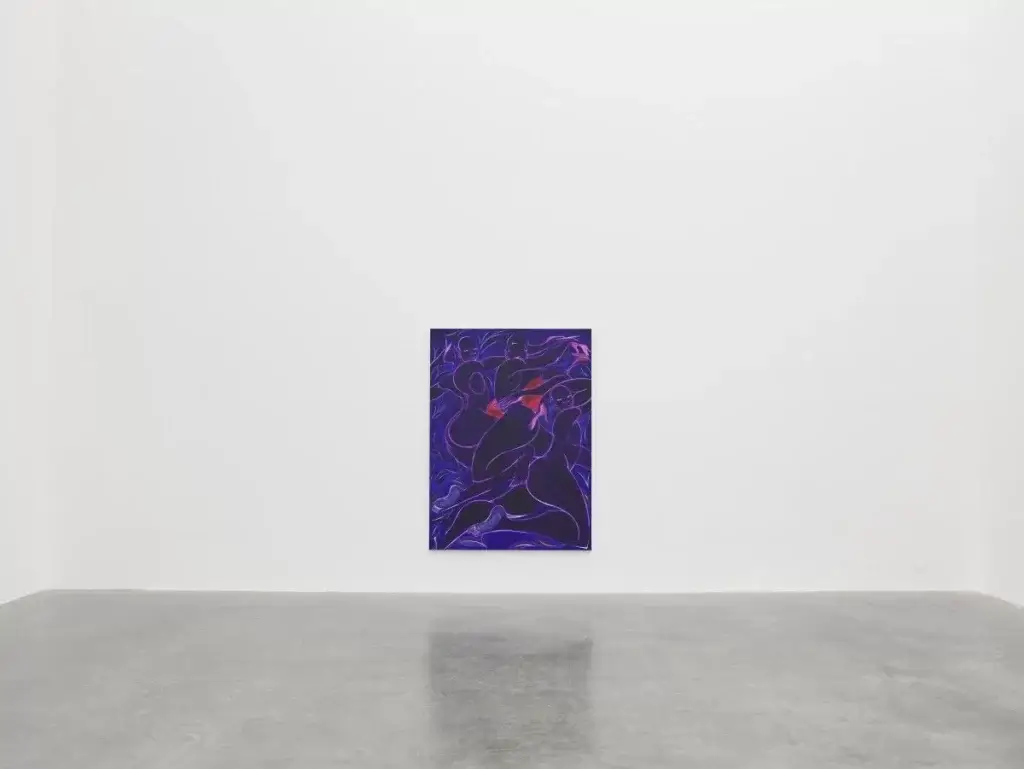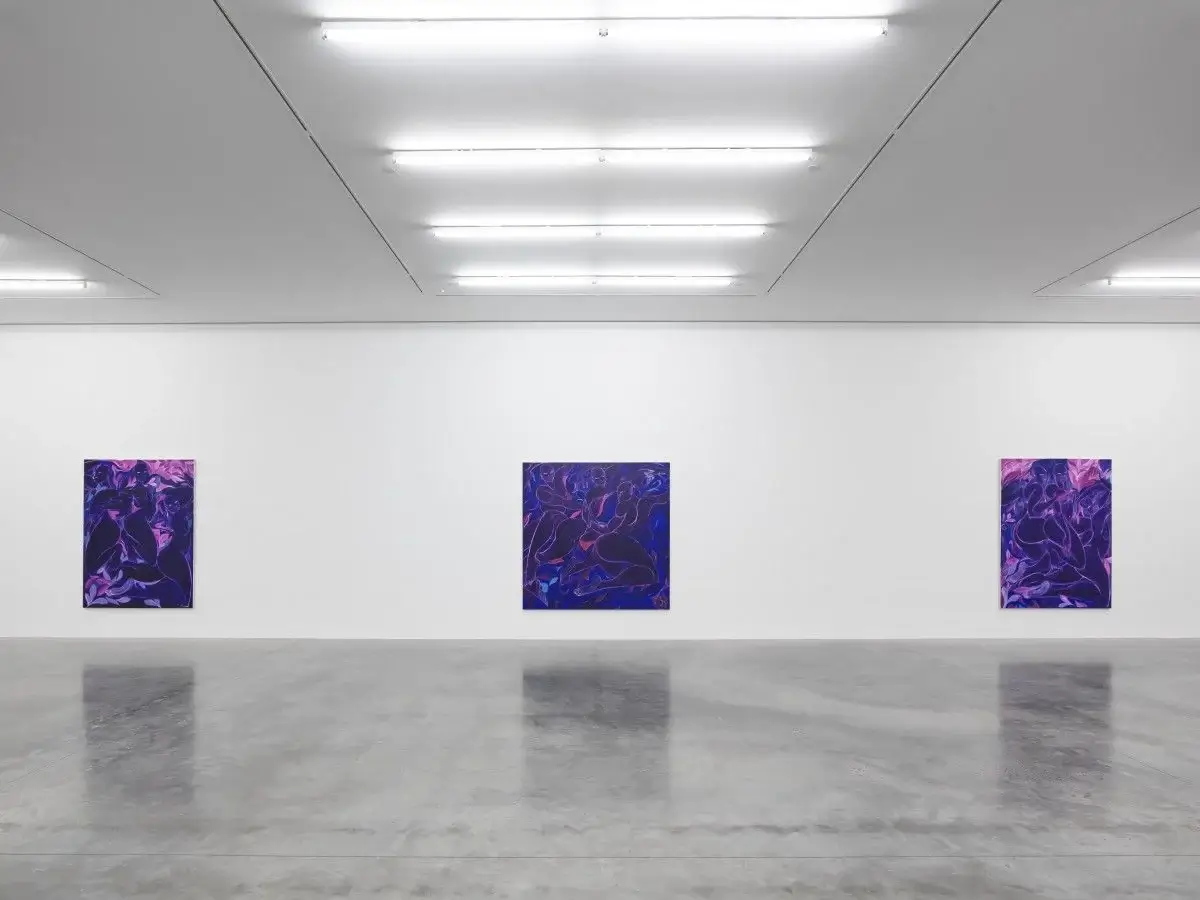Tunji Adeniyi-Jones: That Which Binds Us
19 November 2021–9 January 2022
White Cube
144–152 Bermondsey Street
London
SE1 3TQ
White Cube Bermondsey is pleased to present That Which Binds Us, an exhibition of new paintings by Tunji Adeniyi-Jones and his first with the gallery. Coinciding with the artist’s inaugural UK museum presentation Astral Reflections at Charleston in Sussex, the works focus on expressive figuration and, as the artist states, ‘how the transformative nature of the Black experience is nourished by travel, movement and cultural hybridity’. Informed by his own Yoruba heritage, in his paintings Adeniyi-Jones fuses West African mythology and iconography with the seeming immutability of the Western art canon.
The diverse and disparate influences the artist draws upon include pioneering Nigerian artists such as Ben Enwonwu and Bruce Onobrakpeya, though ultimately reflect a desire to represent not just African subjects, but the human form freed from the specifics of time and place. Focusing on the human form as a timeless instrument for storytelling, his luminous paintings are populated by muscular bodies engaged in ritual dance-like movements or classical posturing. Both ‘The Youth’ and ‘The Virtues’ series, for example, present groups of figures in a dark and rich palette; combining shades of deep purple with indigo and flashes of hot pink, their quality of movement reminisces both African performance masquerade dress and Léon Bakst’s exuberant costume designs for Serge Diaghilev’s Ballet Russes (1909–1929).

(19 November 2021—9 January 2022). Courtesy White Cube.
Exploring the relationship between figure and ground, the artist builds his work through repetition, colour and form, to create a sense of proliferating energy. In a recent essay, art historian Camille Okhio has identified this technique of repetition in Adeniyi-Jones’s paintings as being a process of catharsis and release; what she calls ‘an investment in the ongoing process of self-realisation’. In some, the composition resolves into a single riotous energetic abstraction, while in others, the subjects are responsive to the shifting vegetal forms that crowd around them, so that each part is in communion with the whole. The interconnected nature of figure to ground is, however, consistently interrupted by the outward gaze. Each figure made individual by the distinctive whites of their almond shaped-eyes.
Poetic Feet I, II and III, which combine rich pinks, reds and oranges, feature dancers engulfed by curling flame-like patterns, recalling the patterning of Lorenzo Monaco’s Renaissance illuminated manuscript Last Judgment (1406–1407). Each an acutely subtle variation of the other, Adeniyi-Jones’s figures and forms are doubled, invoking the repetition of ritualised acts that are integral to ceremonial processes. Androgynous in appearance, the figures result from an amalgamation of styles that includes the visual traditions of West African sculpture, specifically Benin and Ife bronze heads sometimes adorned with flowing lines, resembling those found in the practice of facial scarification. Equally, the artist capitalises upon the expressive potential of limbs, calling to mind Renaissance masterpieces where hands and feet are the primary vehicle for anguish and ecstasy.

(19 November 2021—9 January 2022). Courtesy White Cube.
Twin Virtues (Orange, Pink, and Blue and Orange) feature interlocking pairs of figures, which alludes to the reverence of twins within the Yoruba community, Nigeria having one of the highest incidences of twins in the world. The notion of doubling also speaks to the artist’s personal recollections of his childhood; being an only child he used to conjure up fictional siblings, although growing-up he was surrounded by a wide community which became his extended family. In these works, individual bodies are layered and placed horizontally, in a manner reminiscent of the stylised figures of an Egyptian frieze. Across the flattened picture plane, they take on the appearance of an undulating landscape.
In 9 x 9 x 9, a new monochrome sugar-lift aquatint entitled Five Virtues, depicts five figures dancing and gesturing, each a personification of a moral attribute. Again calling to mind the sacred and sublime, as well as his own Catholic upbringing, the artist considers the value of self-identification and transcultural memory. As Adeniyi-Jones has remarked, these are ‘large bodies that have weight and can also bear weight. It’s about being heavy so that you can deal with the heaviness of ownership.’
©2021 Tunji Adeniyi-Jones, White Cube





